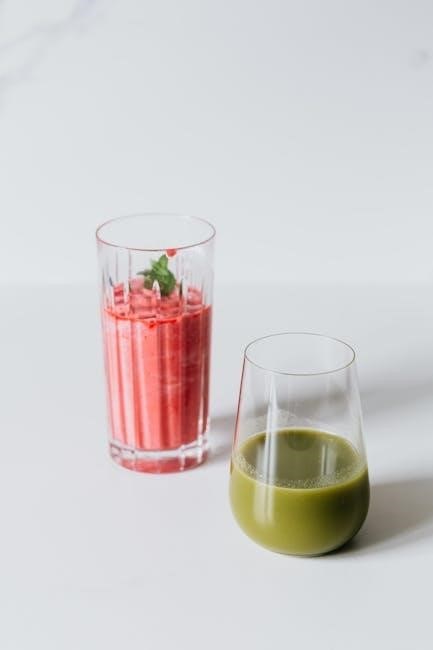
The Low Salicylate Diet is a tailored eating plan designed for individuals with salicylate sensitivity or allergies. It helps reduce inflammation, allergic reactions, and digestive discomfort by limiting certain foods.
What is a Low Salicylate Diet?
A Low Salicylate Diet is an eating plan that restricts foods containing high levels of salicylates, naturally occurring compounds found in plants. It aims to reduce symptoms like inflammation, allergic reactions, and digestive issues in sensitive individuals. Salicylates are present in various fruits, vegetables, herbs, and processed foods. The diet involves identifying and limiting these foods to alleviate discomfort. While salicylates are generally harmless to most, some people experience adverse reactions. This diet helps manage conditions such as salicylate sensitivity or intolerances. It requires careful planning to ensure nutritional balance while avoiding triggers. Consulting a healthcare provider is essential to tailor the diet effectively.
Why is the Low Salicylate Diet Important?
The Low Salicylate Diet is crucial for individuals with salicylate sensitivity or allergies, as it helps alleviate symptoms such as inflammation, skin rashes, digestive issues, and respiratory problems. By removing high-salicylate foods, the diet reduces the body’s exposure to these irritants, promoting overall health and well-being. It is particularly important for managing chronic conditions and improving quality of life for those affected. This dietary approach can prevent severe reactions and support long-term health management. Adhering to the diet requires careful planning and awareness of salicylate content in foods, making it a vital tool for maintaining symptom-free living.
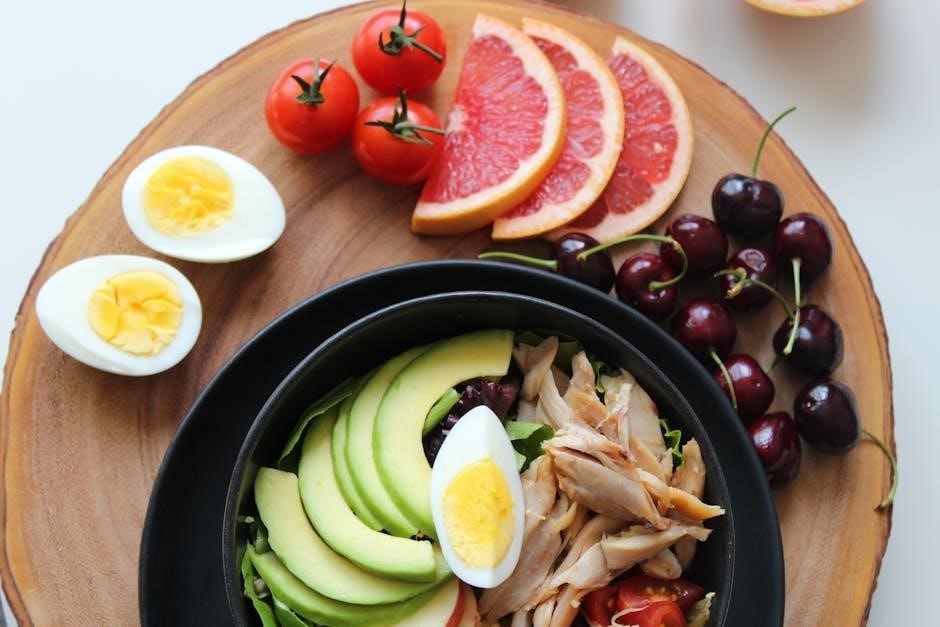
Understanding Salicylates
Salicylates are naturally occurring compounds found in plants, acting as defense mechanisms. They are present in various foods, contributing to flavor and aroma but can cause sensitivity in some individuals.
What Are Salicylates?
Salicylates are organic compounds naturally produced by plants, functioning as defense mechanisms against pathogens and pests. They are derivatives of salicylic acid, known for its role in pain relief and anti-inflammatory properties. Commonly found in fruits, vegetables, herbs, and spices, salicylates contribute to the aroma and flavor of foods. While beneficial for plants, these compounds can cause adverse reactions in sensitive individuals, leading to symptoms like skin rashes, digestive issues, and respiratory problems. Understanding salicylates is crucial for managing their intake, especially for those with sensitivities or allergies, to mitigate potential health complications and improve overall well-being;
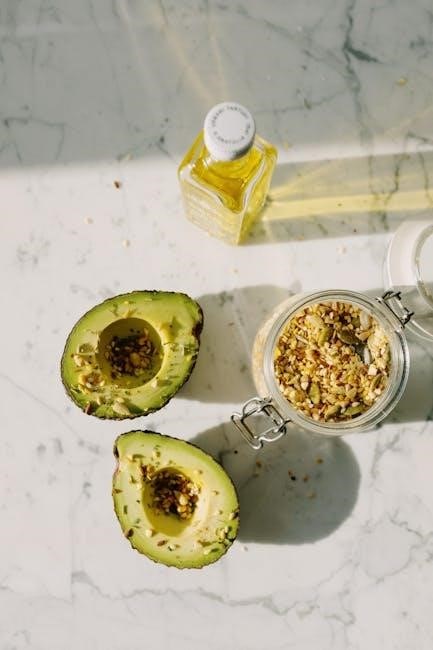
Natural Sources of Salicylates
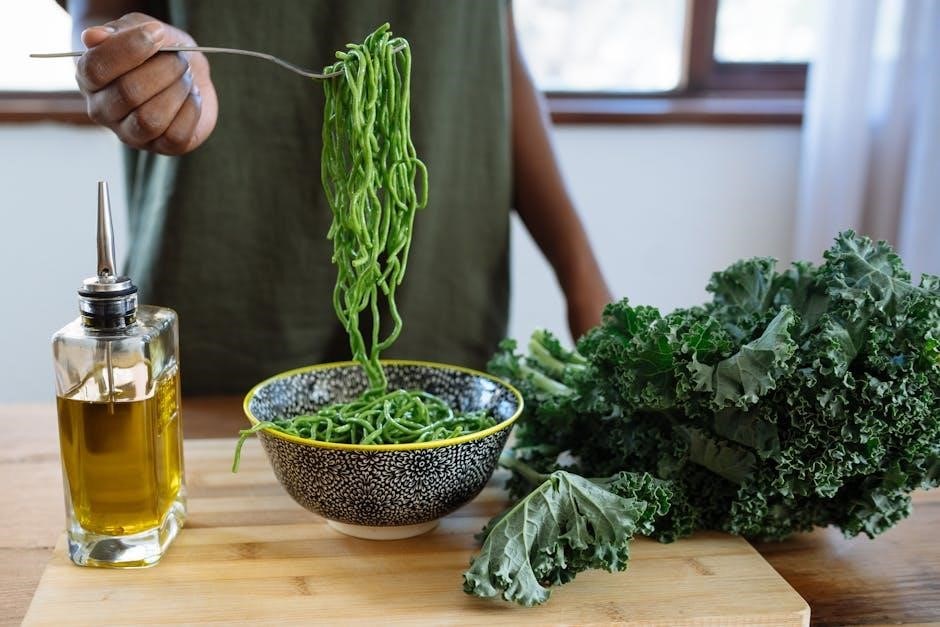
Natural sources of salicylates include a variety of fruits, vegetables, herbs, and spices. Berries like strawberries and blueberries are high in salicylates, as are citrus fruits such as oranges and grapefruits. Certain vegetables, including tomatoes, peppers, and eggplants, also contain significant amounts. Herbs and spices like cinnamon, cloves, and turmeric are particularly rich in these compounds. Additionally, nuts and seeds, such as almonds and sunflower seeds, can contribute to salicylate intake. Understanding these natural sources is essential for individuals following a low salicylate diet, as it helps them make informed choices to avoid or limit these foods appropriately.
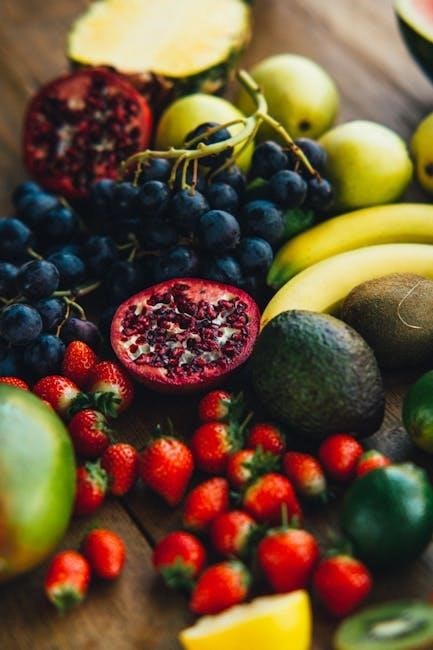
Benefits of a Low Salicylate Diet
A low salicylate diet reduces inflammation, alleviates allergic reactions, and improves digestion. It can also enhance overall well-being and reduce symptoms like skin rashes and respiratory issues.
Reducing Inflammation and Allergic Reactions
A low salicylate diet helps minimize inflammation by reducing the body’s immune response to certain compounds. Salicylates can trigger allergic reactions, leading to symptoms like hives, itching, and respiratory issues. By eliminating high-salicylate foods, individuals often experience a significant reduction in these reactions. The diet also decreases histamine release, which contributes to inflammation. This can lead to improved skin health, fewer digestive issues, and reduced joint pain. Additionally, lowering salicylate intake can help alleviate chronic inflammation, which is linked to various long-term health conditions. Overall, this dietary approach provides a structured way to manage sensitivity and promote overall well-being.
Improving Digestive Health
A low salicylate diet can significantly improve digestive health by reducing irritation and inflammation in the gut. High salicylate foods often trigger bloating, gas, and stomach discomfort in sensitive individuals. By eliminating these triggers, the diet promotes a balanced gut environment, easing conditions like irritable bowel syndrome (IBS). It also minimizes the risk of leaky gut syndrome, where the gut lining becomes permeable, allowing toxins to enter the bloodstream. Additionally, the diet encourages the absorption of essential nutrients by reducing inflammation and enhancing the body’s ability to process foods efficiently. This approach fosters a healthier digestive system and overall well-being;
Foods to Avoid on a Low Salicylate Diet
Eliminate high-salicylate foods like berries, citrus fruits, tomatoes, and spices. Avoid processed foods with additives, artificial colors, and preservatives, as they often contain salicylates.
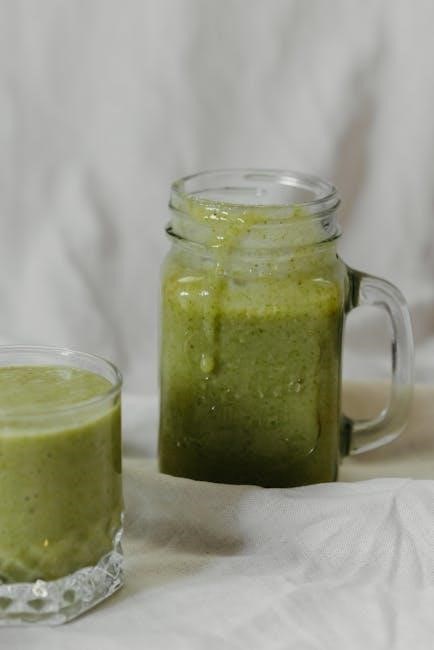
High Salicylate Foods to Limit
High salicylate foods include berries (like strawberries, blueberries, and raspberries), citrus fruits (oranges, grapefruits, lemons), and certain vegetables such as tomatoes, peppers, eggplant, and olives. Herbs and spices like cumin, cloves, and thyme are also high in salicylates. Nuts, particularly almonds, and seeds like sesame seeds should be limited. These foods naturally contain salicylates, which can trigger inflammation or allergic reactions in sensitive individuals. Reducing their intake is essential for managing symptoms. It’s important to identify and avoid or minimize these foods to achieve the benefits of a low salicylate diet. Moderation is key, and gradual reintroduction can help assess tolerance levels.
Processed Foods and Additives to Avoid
Processed foods often contain high levels of salicylates or additives that can worsen sensitivity. Foods like canned goods, sauerkraut, and fermented products should be limited. Avoid foods with artificial preservatives, such as BHA, BHT, and sodium benzoate, as they mimic salicylate effects. Many condiments, like ketchup, soy sauce, and salad dressings, are high in salicylates. Flavor enhancers like MSG and artificial colors can also trigger reactions. Always read labels and opt for fresh, unprocessed alternatives to minimize exposure. Reducing intake of these additives can help manage symptoms and support overall health on a low salicylate diet. Awareness and careful selection are key to maintaining this dietary approach effectively.
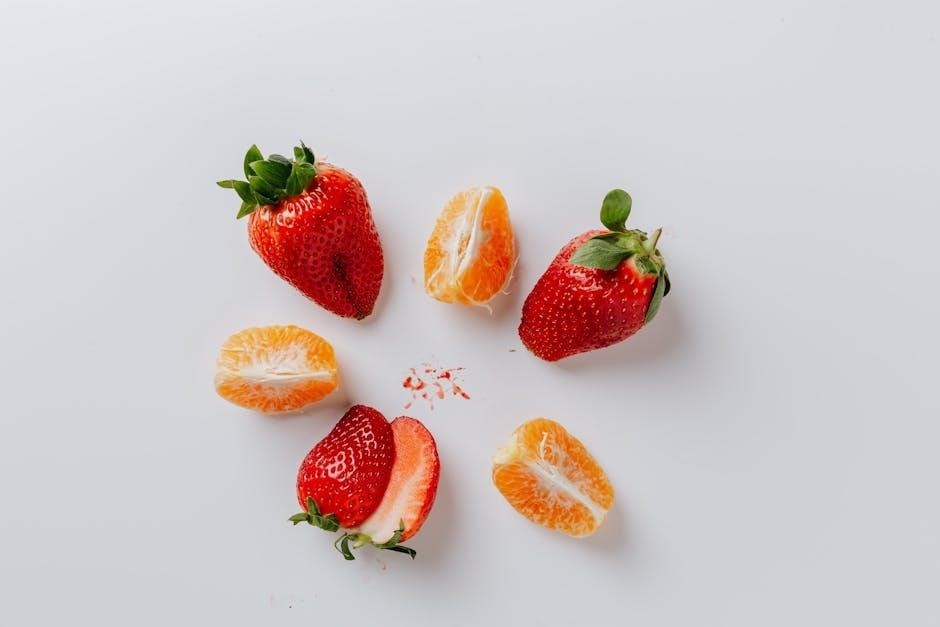
Foods to Include on a Low Salicylate Diet
A low salicylate diet focuses on fresh, unprocessed foods. Include low-salicylate fruits like bananas and pears, vegetables such as lettuce and celery, and lean proteins like chicken and fish. Whole grains like rice and oats are also safe choices. Opt for fresh herbs and mild spices to flavor meals without triggering sensitivity. Sticking to these foods helps minimize salicylate intake and supports a balanced diet.
Low Salicylate Fruits and Vegetables
Focus on selecting fruits and vegetables with naturally low salicylate levels. Opt for bananas, pears, and apples, as they are excellent low-salicylate options. Berries like strawberries and blueberries are also suitable in moderation. For vegetables, choose celery, lettuce, cucumbers, and zucchini. These options are gentle on the system and reduce the risk of salicylate overload. Cooking or steaming vegetables can further lower salicylate content. Avoid peels and seeds, as they often contain higher concentrations. Incorporate these foods into meals to ensure a nutrient-rich diet while adhering to low salicylate guidelines. Fresh herbs like basil and mint can add flavor without increasing salicylate intake.
Safe Protein and Dairy Options
Choose lean meats like chicken, turkey, beef, and pork, as they are naturally low in salicylates. Fish such as cod and salmon are also excellent choices. Eggs are another safe option and versatile for meals. For dairy, opt for milk, cream, and butter, as they are low in salicylates. Avoid fermented dairy products like cheese and yogurt, as they may contain higher levels. Ensure proteins are fresh and unprocessed to minimize salicylate exposure. Portion control is key to maintaining a balanced diet. Always prioritize fresh, whole foods to reap the most benefits while adhering to the low salicylate guidelines.
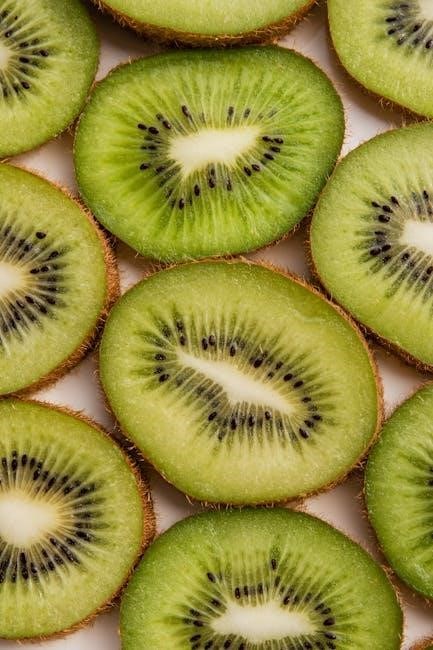
Sample Meal Plan for a Low Salicylate Diet
A sample meal plan includes oatmeal with pears for breakfast, grilled chicken with lettuce and cucumber for lunch, and cod with rice and green beans for dinner. Snacks like pears and bananas are suitable. Always choose fresh, unprocessed foods to ensure low salicylate intake. This plan helps maintain dietary balance while minimizing potential inflammation triggers. Adjust portion sizes based on individual needs and preferences.
Breakfast Ideas
Start your day with low-salicylate options like oatmeal topped with pears or bananas. Scrambled eggs with spinach or zucchini are also safe. Smoothies made with pears, bananas, and almond milk are great, but avoid high-salicylate berries. Plain yogurt with low-salicylate fruits like pears or peaches is another option. Ensure all ingredients are fresh and unprocessed to minimize salicylate intake. Always check labels for hidden additives. These breakfast ideas provide a balanced and safe start while adhering to the low-salicylate diet. Consistency is key to managing symptoms effectively. Consult a healthcare provider for personalized dietary advice to ensure optimal results.
Lunch and Dinner Suggestions
For lunch and dinner, focus on low-salicylate protein sources like chicken, turkey, or fish, paired with safe vegetables such as cucumbers, lettuce, or celery. Grains like rice, quinoa, and gluten-free pasta are excellent bases. Steamed or roasted vegetables like zucchini, carrots, or green beans are also safe. Avoid high-salicylate ingredients like tomatoes, peppers, and spices. Opt for simple seasoning with salt, pepper, and olive oil. Salads with low-salicylate greens and fruits like pears or bananas can be satisfying. Ensure all foods are fresh and unprocessed to maintain low salicylate levels. These meals are nutrient-rich and align with the diet’s guidelines, helping to manage symptoms effectively.
Challenges of Following a Low Salicylate Diet
Limited food options, social eating difficulties, and ensuring nutritional balance are common challenges. It requires careful planning to avoid high-salicylate foods and maintain variety in meals.
Dining Out and Social Eating
Dining out and social eating can be challenging on a low salicylate diet due to limited control over ingredients and preparation methods. Many restaurant dishes contain high-salicylate foods like tomatoes, spices, and herbs, making it difficult to identify safe options. Communication with chefs is essential but not always reliable. Social gatherings may lead to feelings of isolation or embarrassment when declining certain foods. Cross-contamination in kitchens can also pose risks. Planning ahead, such as calling restaurants in advance or carrying snacks, can help navigate these situations. Despite the hurdles, with preparation and creativity, social eating can remain enjoyable and stress-free.
Maintaining Nutritional Balance
Maintaining nutritional balance on a low salicylate diet requires careful planning to ensure adequate intake of essential vitamins, minerals, and nutrients. Restricting certain foods can lead to deficiencies if not managed properly. Emphasizing nutrient-dense, low-salicylate options like leafy greens, select fruits, and lean proteins is crucial. Consulting with a dietitian or healthcare provider can help tailor the diet to meet individual needs. Supplementation may be necessary for nutrients like vitamin C or folate, which are often found in high-salicylate foods. Regular monitoring of nutrient levels and adjusting the diet accordingly ensures long-term health and well-being while adhering to the low salicylate protocol.
Important Considerations
Always prioritize reading food labels to identify hidden salicylates and additives. Consulting a healthcare provider ensures personalized guidance and safety, especially for those with sensitivities or conditions.
Reading Food Labels

Reading food labels is crucial on a low salicylate diet to avoid hidden sources of salicylates. Many processed foods contain additives like artificial colors, flavors, and preservatives, which may include salicylates. Always check ingredient lists for terms like “natural flavors,” “spices,” or “plant extracts,” as these can mask salicylate-containing compounds. Look for certifications like “low salicylate” or “hypoallergenic” to ensure safety. Be aware of alternative names for salicylates, such as salicylic acid or methyl salicylate. Even small amounts can trigger reactions, so vigilance is key. This step helps maintain compliance with the diet and prevents unintended exposure to problematic substances.
Consulting a Healthcare Provider
Consulting a healthcare provider is essential before starting a low salicylate diet. They can help determine if this diet is appropriate for your specific health needs and provide personalized guidance. A healthcare provider can identify underlying conditions that may benefit from salicylate reduction, such as allergies or inflammatory disorders. They can also monitor your progress and adjust the diet as needed. Additionally, they can help ensure you maintain proper nutrition while avoiding high-salicylate foods. Discussing potential vitamin or mineral deficiencies with your provider is crucial, as they may recommend supplements to support your health. Professional advice ensures a safe and effective transition to this dietary approach.
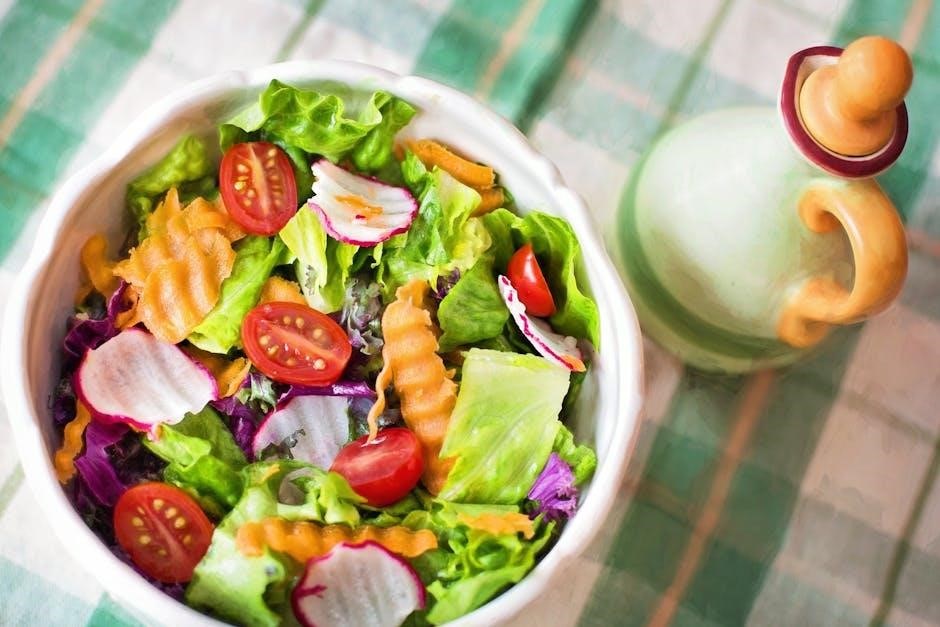
The low salicylate diet is a valuable approach for managing health conditions. It reduces inflammation and enhances well-being. Consult a provider before starting to ensure safety and effectiveness.
Final Thoughts on the Low Salicylate Diet
The low salicylate diet offers a structured approach to managing sensitivities and improving health. By focusing on low-salicylate foods and avoiding triggers, individuals can reduce inflammation and enhance digestion. It requires careful planning and attention to food labels. Consulting a healthcare provider or dietitian is essential to ensure nutritional balance and address personal needs. While challenging, especially in social settings, the potential benefits make it a worthwhile option for those seeking relief from salicylate-related issues. Patience and dedication are key to successfully adopting this dietary approach for long-term well-being.
Next Steps for Implementing the Diet
After understanding the low salicylate diet, the next steps involve practical implementation; Start by assessing your current diet and identifying high-salicylate foods to eliminate. Create a shopping list focused on low-salicylate options and plan meals for the week. Gradually transition by replacing high-salicylate foods with safer alternatives. Clean out your pantry to remove non-compliant items. Track your progress in a journal to monitor symptoms and adjustments. Seek support from online communities or consult a dietitian for personalized guidance. Finally, stay committed and patient, as it may take time to notice improvements in health and well-being.